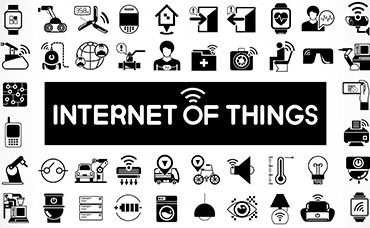IoT Adoption Gaining Traction Despite Widespread Breach Vulnerability

(phipatbig/Shutterstock)
IoT in 2017 is a hodgepodge of contradictions. Adoption of IoT is at once more widespread and more vulnerable than might be thought. Companies report greater IoT benefit than they had expected, yet nearly nine in 10 IoT implementers have encountered security breaches. And many struggle with making sense of the IoT machine-data deluge.
This is the yin-yang snapshot of IoT today reported in a new IoT market study issued this morning from Aruba, a Hewlett-Packard Enterprise IT solutions company, which surveyed 3,100 IT and business decision makers late last year from global organizations with 500 or more employees in the public and private sectors. Respondents are primarily from the industrial, government, retail, healthcare, education, construction, finance, and IT/technology/telecommunications sectors.
According to the study, IoT adoption in several sectors is widespread – exceeding 70 percent in the enterprise workplace, for example, and more than 60 percent in the industrial sector – and “mass adoption” is expected by 2019 as competitive advantage from IoT is gained and catch-up implementations are put in place. Many companies report an “expectations dividend,” with IoT returning higher ROI or greater innovation than anticipated. But several factors, notably difficulty leveraging IoT-related data and IoT-related security breaches, remain as obstacles.
“The fact that 84 percent were already impacted by an IoT related breach is pretty alarming,” Derek Howard, HPE’s worldwide IoT marketing manager, told EnterpriseTech. “With the right security system companies can be made a lot more secure. Is it impenetrable? I wouldn’t say that. But I would say that the 84 percent that have had a security breach probably don’t have a solid security plan. So proceed with caution. This is a real issue. Greater measures must be taken than what’s being done today.”
It seems clear organizations will tolerate the threat of breaches, and spend heavily to ward them off, because of the potential upside of IoT.
For example, according to the study, only 16 percent of business leaders projected a large profit gain during the planning stages of their initial IoT implementation; post-adoption, 32 percent of executives realized profit increases. Similarly, 29 percent of executives expected business efficiency improvements, whereas 46 percent experienced efficiency gains. Twenty-eight percent expected innovation increases, 48 percent reported more innovation.
“With the business benefits of IoT surpassing expectations, it’s no surprise that the business world will move towards mass adoption by 2019,” said Chris Kozup, vice president of marketing at Aruba. “But with many executives unsure of how to apply IoT to their business, those who succeed in implementing IoT are well positioned to gain a competitive advantage.”
As for use cases, the Aruba research shows varying levels of IoT maturity across different industry sectors.
In the enterprise, 72 percent of companies surveyed have implemented a smart workplace IoT strategy for productivity and efficiency, from air conditioning and lighting systems (56 percent) to personal mobile devices (51 percent). More than three quarters say IoT in the workplace has improved the effectiveness of their IT team, and 75 percent find it has increased profitability.
In the industrial sector, 62 percent of respondents have implemented IoT, with monitoring and maintaining industrial functions identified as the most prevalent use case. Use of IP-based surveillance cameras for security is still in its infancy, with only 6 percent having implemented it. However, when asked about future implementations, surveillance jumped to 32 percent. Sector-wide, 83 percent report increased business efficiency from IoT.
In healthcare, 60 percent of organizations globally have introduced IoT devices into their facilities, primarily to improve patient monitoring. Eight in 10 healthcare organizations reported increases in IoT-related innovation and 73 percent reported cost savings.
Lagging behind these sectors are retail, with 49 percent using IoT technology, and government, with 42 percent of municipalities deploying IoT devices.
Analyzing data is a clear challenge for global organizations, according to the study. While 98 percent of organizations that have adopted IoT claim they can analyse data, fully 97 percent feel it is difficult to create value from this data. Meanwhile, 39 percent of businesses are not extracting or analyzing data within corporate networks, and thus are missing out on insights that could improve business decisions.
“While IoT grows in deployment, scale and complexity,” said Kozup, “proper security methodologies to protect the network and devices, and more importantly, the data and insights they extract, must also keep pace. If businesses do not take immediate steps to gain visibility and profile the IoT activities within their offices, they run the risk of exposure to potentially malicious activities.”











